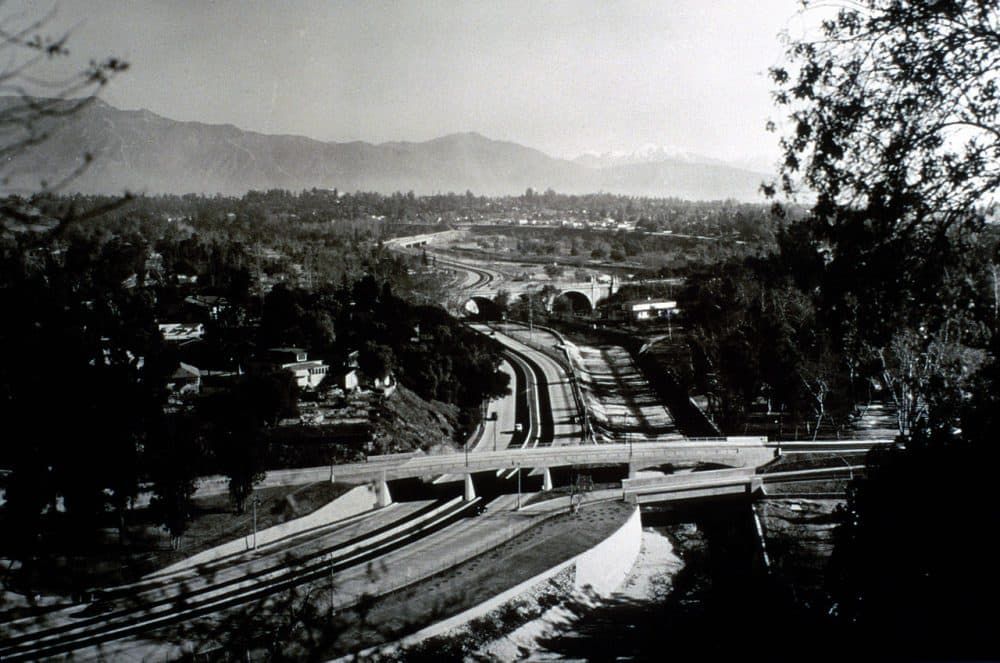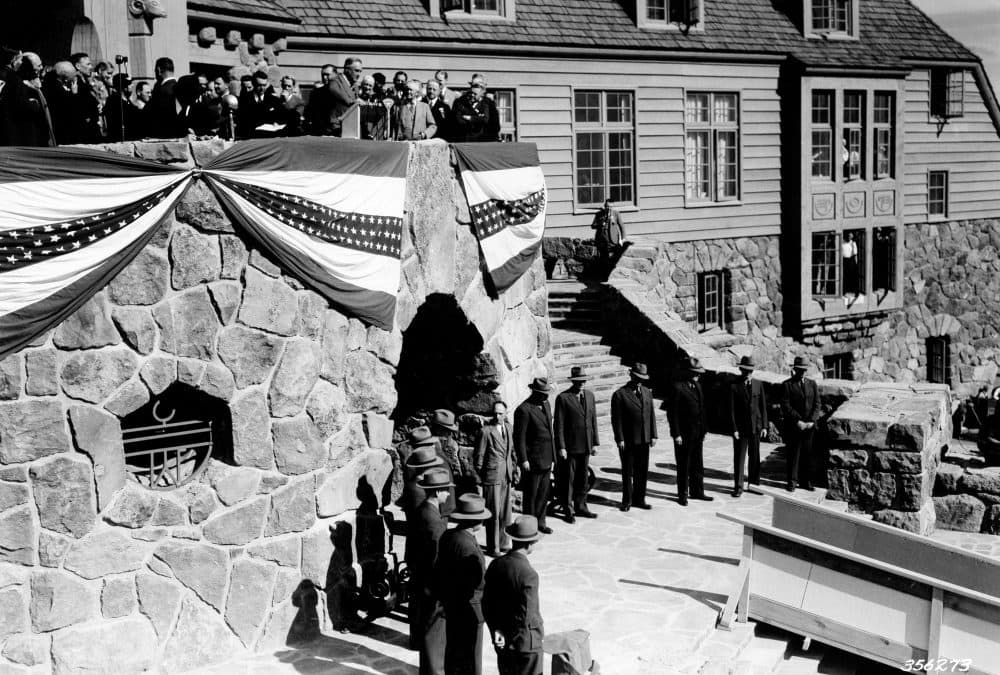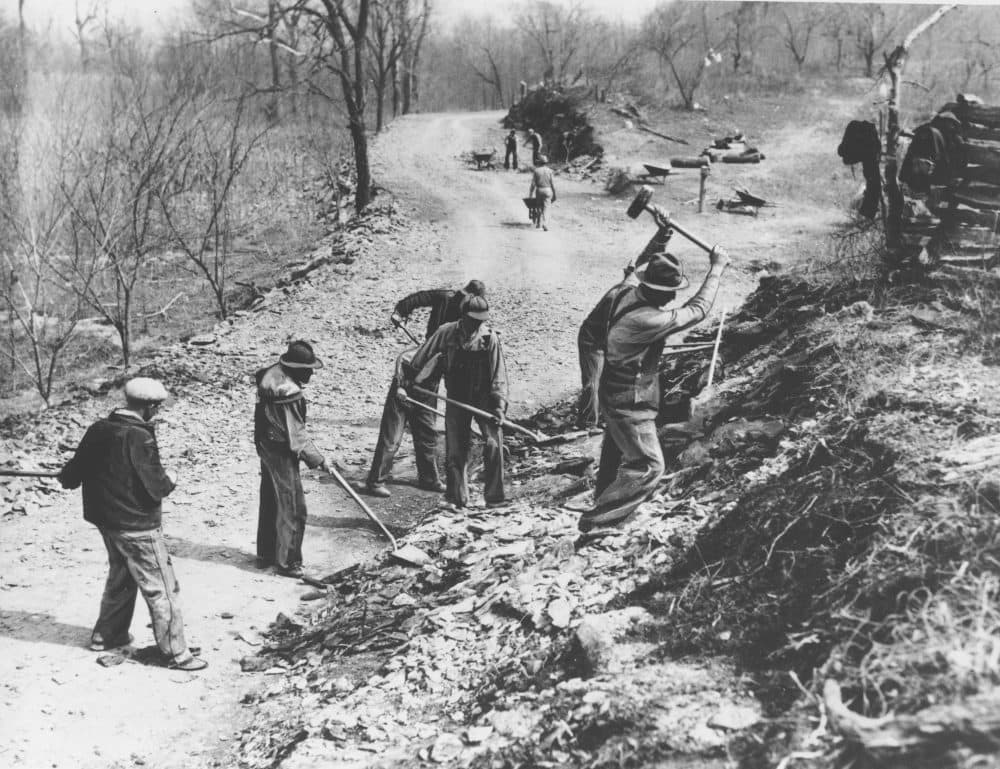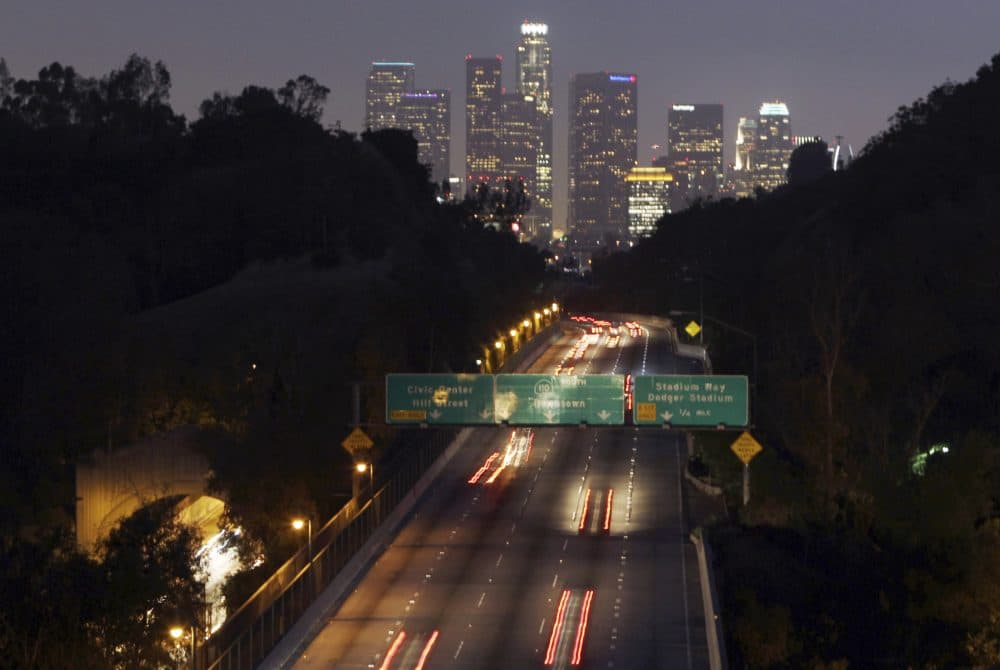Advertisement
How Did The WPA Change U.S. Infrastructure? 'It Did Just About Everything,' Scholar Says

President Trump has yet to announce his trillion-dollar plan to improve infrastructure across the U.S., something he's been talking about since the campaign.
If it happens, it could be the biggest infrastructure push in the U.S. in decades — perhaps comparable to the most famous overhaul in American history. That came eight decades ago, under President Franklin Roosevelt's New Deal and the Works Progress Administration.
"It did just about everything," Gray Brechin, geographer and founder of the online archive The Living New Deal, tells Here & Now's Jeremy Hobson of the WPA. "It built roads, sewers, water systems, airports, zoos, libraries, city halls. It's all over the country. It's just that you don't really notice it."
Interview Highlights
On examples of structures built by the WPA
"A few would be LaGuardia Airport, for example, the San Antonio River Walk, San Francisco's Cow Palace, they restored the Statue of Liberty — it probably wouldn't have made it through Hurricane Sandy without the work that the WPA did. They built the visitor's center and did all the landscaping on Liberty Island. They did Timberline Lodge, which is one of my favorites up on Mount Hood in Oregon."

On WPA-built infrastructure's impact today
"We're using it all over the country, like the Triborough Bridge in New York and the Bay Bridge in San Francisco ... the Arroyo Seco Freeway. The problem is, well, I should say not the problem is that they built very, very well. I'm always astounded when I look at those buildings and other structures at how well-built they are. And fortunately they did so, because they never imagined that we would decide to stop maintaining them.
"One of the things that the WPA did was to pave the farm-to-market roads that so many farmers depend on to get their produce to markets. And all of that is falling apart right now. As are our sewers and our water systems and our dams, many of which are not even being inspected anymore. So we've really got a long ways to catch up. But I think meanwhile, we should just become aware of what was done at that time, why they were the greatest generation who built all that stuff, and we should be grateful to them."
On how the WPA was able to employ so many people
"Harry Hopkins was in charge of all of that. He was a social worker, but he also was a brilliant administrator. There was another agency in the winter of 1933 to '34 which was kind of the beta version of the WPA, it was called the Civil Works Administration. Most people have never heard of it. But that was to get people through that winter. And amazingly, within less than two months, Harry Hopkins put more than 4 million Americans to work doing everything from paving roads and building parks and airports, to painting murals. The WPA in its eight-year existence employed about 8.5 million people. And since the country had about 200 million fewer people at that time, well if you employed 4 million people in less than two months, that would be the equivalent of about 10 million Americans put to work."

On how the agency determined who was best suited for different work
"They actually did a kind of evaluation of every person who came in and tried to fit them to their skills, and if they didn't have skills, then they would generally give them skills. There was much job training. They also built thousands of schools, entire college campuses. And so there was this belief that everyone should be entitled to a free, quality education. So much of the public education that I took for granted, I'm 70 now, I didn't realize that that was all a legacy of the New Deal. We couldn't imagine paying the kind of tuition that college and university students have to pay now."
On the WPA's cost
"The WPA cost about $130 billion in [today's] money. The [Public Works Administration] was $72 billion. So, compare $130 billion for the WPA, which created 8.5 million jobs, with the $275 billion that Obama spent for his stimulus package. That created an estimated 640,000 jobs. So compare that with the 8.5 million that the WPA created, and then multiply that by two and a half, which would be the multiplier for the increase in population now. So you can see that in fact this kind of trickle down, which was the PWA, and the way we work today, is not very efficient for producing jobs. It is efficient in producing giant dams and bridges and subway tunnels, but not very efficient in producing jobs."

On whether people pushed back on the price tag
"There were many politicians who did, but particularly the newspapers, especially the Hearst newspapers. William Randolph Hearst hated it. Roosevelt was very, very popular with the workers and the unemployed, as you might understand. He was hated by the wealthy, and that included many of the newspaper publishers, especially Hearst, who called Roosevelt more communist than the communists themselves. And that's because he instituted a genuine progressive income tax in order to pay for all of these [agencies]. But even Republican mayors and governors actually liked the New Deal programs as long as jobs and money were coming into their jurisdictions, because of course it made them very popular and made them look good."
This segment aired on January 16, 2018.